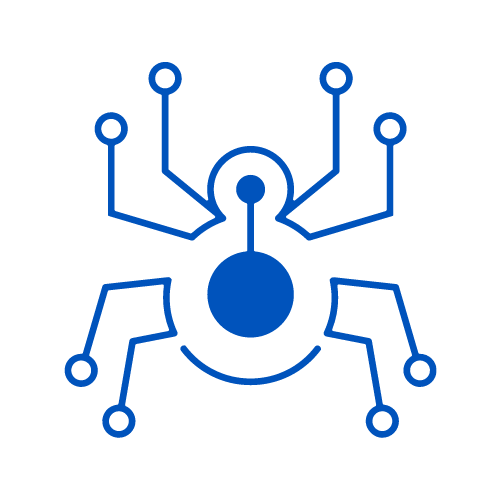Enhancing Cloud Resilience: Actionable Lessons for CISOs from Real-World Incidents

The cloud computing paradigm has fundamentally reshaped how organizations operate, offering agility and scalability but also introducing dynamic and intricate security challenges. Navigating this evolving landscape requires an up-to-date understanding of the risks involved. The Cloud Security Alliance (CSA) Top Threats Working Group provides valuable insights by analyzing real-world cloud security incidents, moving beyond theoretical concerns to explore the practical impacts and contributing factors of recent breaches. This "Deep Dive" analysis offers crucial lessons for CISOs focused on building and enhancing their organization's cloud resilience.
At the core of understanding cloud security incidents are the concepts of threats and vulnerabilities. As defined in the sources, threats are events or actions carried out by a threat actor that can potentially cause damage to an organization's operations, assets, employees, or reputation, through means like unauthorized access, destruction, disclosure, modification of information, or denial of service. Vulnerabilities, on the other hand, are deficiencies found within a process, system, application, IT asset, system security procedure, or internal control that can be exploited by a threat actor to achieve their objectives. These deficiencies typically arise from security controls that are missing, weak, or have been misapplied.
The CSA Deep Dive report analyzes eight recent, high-profile incidents involving cloud services. By examining the threat models, technical details, business impacts, and contributing factors, the analysis reveals recurring patterns in how threats and vulnerabilities are exploited in practice. While surveys reflect perceived top concerns, the case studies highlight the issues most frequently observed in actual breaches.
Based on the frequency of their appearance across these incidents, the most commonly observed security issues (Tier 1) were Identity and Access Management (IAM) challenges, Misconfiguration and Inadequate Change Control, and Insecure Software Development. IAM issues, such as weak access controls, lack of multifactor authentication (MFA), and privilege escalation, frequently enabled unauthorized access. Misconfigurations often led to prolonged data exposure due to improperly secured cloud environments.
The analysis of these real-world incidents provides CISOs with several key takeaways for enhancing their organization's cloud resilience:
- Prioritize Strong Identity and Access Management (IAM): Incidents repeatedly show that IAM issues are a primary vector for breaches. Weak access controls, lack of MFA, and excessive privileges frequently enable attackers to gain and expand unauthorized access. Robust IAM practices, including enforcing the principle of least privilege, implementing strong authentication methods beyond simple 2FA (like passkeys or hardware security keys), and utilizing privileged access management (PAM) solutions, are essential. Regularly reviewing user access is also crucial. For instance, the FTX incident highlighted how reliance on weak SMS-based 2FA enabled attackers to compromise accounts and steal assets. The Microsoft breach also involved access via a test account where MFA was not enabled. Toyota's case showed how insufficient enforcement of least privilege contributed to prolonged risk exposure.
- Treat Misconfiguration and Inadequate Change Control as Critical Risks: Misconfigurations are a leading cause of cloud data exposures. Improperly secured cloud environments, such as publicly accessible storage buckets, lead to prolonged data exposure. The Football Australia case involved a publicly accessible S3 bucket with hard-coded credentials. Toyota's data leak was attributed to human error in cloud configuration that persisted undetected for nearly a decade due to a lack of oversight and audits. The Darkbeam exposure similarly resulted from an unsecured database configuration exposed to the public internet. Cloud architectures and security strategies must assume that misconfigurations and human errors will occur and build defenses accordingly. Implementing policies to block public access by default and enforcing secure configuration baselines are vital. Automated configuration monitoring and audits can help prevent misconfigurations from persisting. Inadequate change control, such as lacking quality assurance in software deployment, can also lead to widespread operational issues, as seen in the CrowdStrike outage caused by a faulty update.
- Strengthen Secure Software Development Practices: Weak software development, delivery, and deployment practices can introduce security flaws that attackers exploit. Hard-coded credentials, as found in the Football Australia website, are a severe vulnerability that can enable unauthorized access. Implementing secure practices and considering a cloud-first approach within the Software Development Life Cycle (SDLC) helps mitigate risks.
- Recognize and Mitigate Supply Chain Risks: Threat actors frequently exploit weaknesses in supply chains and third-party integrations. The CrowdStrike incident starkly illustrated the critical dependency on centralized security solutions and the widespread impact when a trusted third-party supplier experiences a significant issue. Understanding the risks associated with third-party (and fourth-party) suppliers within the shared responsibility model is crucial. Organizations must assess vendor security, enforce strict requirements, and continuously monitor dependencies. Supply chain partners managing sensitive data must uphold the highest security standards. Legal teams should be involved in reviewing contracts to address potential harm caused by suppliers.
- Implement Continuous Monitoring, Real-Time Detection, and Cloud-Specific Governance: Many breaches go undetected for extended periods, highlighting insufficient visibility. CISOs must invest in automated monitoring, anomaly detection, centralized logging (like SIEM), and security automation to quickly identify misconfigurations, unauthorized access, and malicious activities. Toyota's decade-long exposure was partly due to a lack of monitoring and routine audits. The Darkbeam exposure was discovered externally, underscoring the gap in internal monitoring. Weak governance, including a lack of consistent review and compliance monitoring, allows security gaps to persist. Organizations should enforce cloud security policies, maintain secure configuration baselines, and conduct regular governance reviews. Incident response plans must be tailored to cloud complexity and risks. Regular testing of these plans is vital.
- Extend Security Practices Beyond Production: Vulnerabilities in development and testing environments, often with weaker controls, can be exploited. Security controls, including least privilege and monitoring, must be enforced across all cloud environments. The Microsoft breach notably originated from a legacy, non-production test account that had elevated access and lacked MFA. Test accounts are not exempt from security policies.
- Protect Sensitive Data: Sensitive data requires robust encryption at rest and in transit. Accidental data disclosures due to misconfigurations remain a risk. Implementing policies to prevent public access to sensitive data stores is key.
- Address Simple, Dated, and Subtle Attack Methods: Simple attacks like password spraying remain effective, even against mature organizations, as demonstrated in the Microsoft breach. Adversaries may also use a passive, patient approach to evade detection; detection methods should account for low-frequency, targeted attempts. Social engineering, even with emerging techniques like deepfakes, continues to be a vector, as seen in the Retool & Fortress incident. Regular security awareness training is crucial.

In conclusion, the analysis of these real-world cloud security incidents underscores that while cloud technology evolves rapidly, many breaches stem from fundamental security control gaps. Focusing on strengthening foundational controls like IAM, secure configurations, continuous monitoring, and robust governance, while also addressing supply chain risks and tailoring incident response to the cloud environment, are key strategies for CISOs to enhance their organization's cloud resilience. Continuous improvement requires ongoing auditing, security automation, security awareness, and integrating lessons learned from past incidents. By implementing these actionable takeaways, organizations can significantly strengthen their security posture against the prevalent threats observed in the cloud landscape.






